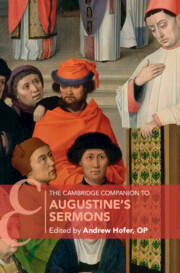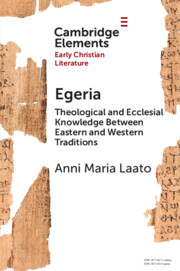Refine search
Actions for selected content:
87 results

The Cambridge Guide to Global Medieval Travel Writing
-
- Published online:
- 03 October 2025
- Print publication:
- 02 October 2025
Chapter 18 - Iberia
- from France, Italy, and Iberia
-
-
- Book:
- The Cambridge Guide to Global Medieval Travel Writing
- Published online:
- 03 October 2025
- Print publication:
- 02 October 2025, pp 322-336
-
- Chapter
- Export citation
Introduction - Towards a Global History of Medieval Travel Writing
-
-
- Book:
- The Cambridge Guide to Global Medieval Travel Writing
- Published online:
- 03 October 2025
- Print publication:
- 02 October 2025, pp 1-18
-
- Chapter
- Export citation
Chapter 3 - Women Travellers
- from Part I - Contexts
-
-
- Book:
- The Cambridge Guide to Global Medieval Travel Writing
- Published online:
- 03 October 2025
- Print publication:
- 02 October 2025, pp 57-72
-
- Chapter
- Export citation
Chapter 34 - The Mongol Empire
- from Asia and the Americas
-
-
- Book:
- The Cambridge Guide to Global Medieval Travel Writing
- Published online:
- 03 October 2025
- Print publication:
- 02 October 2025, pp 605-622
-
- Chapter
- Export citation
Chapter 12 - Scandinavia
- from Part II - Traditions
-
-
- Book:
- The Cambridge Guide to Global Medieval Travel Writing
- Published online:
- 03 October 2025
- Print publication:
- 02 October 2025, pp 217-236
-
- Chapter
- Export citation
Chapter 25 - Hungary
- from The Empire and Central Europe
-
-
- Book:
- The Cambridge Guide to Global Medieval Travel Writing
- Published online:
- 03 October 2025
- Print publication:
- 02 October 2025, pp 445-458
-
- Chapter
- Export citation
Chapter 11 - Iceland
- from The Nordic World and the British Isles
-
-
- Book:
- The Cambridge Guide to Global Medieval Travel Writing
- Published online:
- 03 October 2025
- Print publication:
- 02 October 2025, pp 203-216
-
- Chapter
- Export citation
Chapter 32 - Mecca
- from Africa and the Middle East
-
-
- Book:
- The Cambridge Guide to Global Medieval Travel Writing
- Published online:
- 03 October 2025
- Print publication:
- 02 October 2025, pp 568-586
-
- Chapter
- Export citation
Chapter 31 - Arabia
- from Africa and the Middle East
-
-
- Book:
- The Cambridge Guide to Global Medieval Travel Writing
- Published online:
- 03 October 2025
- Print publication:
- 02 October 2025, pp 553-567
-
- Chapter
- Export citation
Chapter 30 - Jerusalem
- from Africa and the Middle East
-
-
- Book:
- The Cambridge Guide to Global Medieval Travel Writing
- Published online:
- 03 October 2025
- Print publication:
- 02 October 2025, pp 537-552
-
- Chapter
- Export citation
Chapter 9 - Ibn Battuta
- from Part I - Contexts
-
-
- Book:
- The Cambridge Guide to Global Medieval Travel Writing
- Published online:
- 03 October 2025
- Print publication:
- 02 October 2025, pp 165-180
-
- Chapter
- Export citation
Chapter 1 - Travel Writing in Late Antiquity
- from Part I - Contexts
-
-
- Book:
- The Cambridge Guide to Global Medieval Travel Writing
- Published online:
- 03 October 2025
- Print publication:
- 02 October 2025, pp 21-39
-
- Chapter
- Export citation
Chapter 10 - Jewish Travellers
- from Part I - Contexts
-
-
- Book:
- The Cambridge Guide to Global Medieval Travel Writing
- Published online:
- 03 October 2025
- Print publication:
- 02 October 2025, pp 181-198
-
- Chapter
- Export citation
How and Why the Quyllurit’i Pilgrimage Is Related to the Tupac Amaru Rebellion
-
- Journal:
- Latin American Research Review ,
- Published online by Cambridge University Press:
- 16 September 2025, pp. 1-19
-
- Article
-
- You have access
- Open access
- HTML
- Export citation
25 - Travel and Communication
- from Part II - Artefacts and Evidence
-
- Book:
- The Cambridge Encyclopaedia of Late Antique Art and Archaeology
- Published online:
- 04 July 2025
- Print publication:
- 31 July 2025, pp 458-476
-
- Chapter
- Export citation
15 - Preaching on Life as a Pilgrimage
- from Part III - Augustine’s Preaching Themes
-
-
- Book:
- The Cambridge Companion to Augustine's Sermons
- Published online:
- 26 May 2025
- Print publication:
- 12 June 2025, pp 281-298
-
- Chapter
- Export citation

The Cambridge Companion to Augustine's Sermons
-
- Published online:
- 26 May 2025
- Print publication:
- 12 June 2025

Egeria
- Theological and Ecclesial Knowledge Between Eastern and Western Traditions
-
- Published online:
- 12 May 2025
- Print publication:
- 05 June 2025
-
- Element
- Export citation
Chapter 4 - ‘Habit’s Afterlife’
-
- Book:
- Seamus Heaney and Catholicism
- Published online:
- 20 February 2025
- Print publication:
- 27 February 2025, pp 122-152
-
- Chapter
- Export citation
